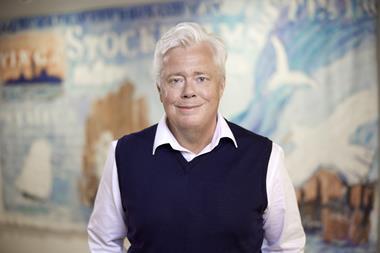The good news is that Romania is on the threshold of a major pension reform, introducing second and third pillar pension funds to ease the pressure on an overstretched state PAYG first pillar. The bad news is that Romania has been here before, only to fall at the last hurdle.
Delays in bringing a legislative package intended to restructure the first pillar and introduce a mandatory second pillar, a voluntary third pillar and a fourth pillar funded by privatisation proceeds resulted in it being buried by a subsequent government.
That administration's attempt was in turn abandoned but its successor is now making a further attempt. But again the ground appears to be shifting under its feet.
The political will behind the reforms has weakened following last year's defection from the government of a junior coalition member, says Dragos Neacsu, managing partner at consultancy Dragon Finance. "Now it is a minority government, which means it has to negotiate over every bill," he says.
"So we may have a reshuffle or a new election, although it is 90% certain that we will go to the polls. It may be within the next 100 days, before the European parliamentary election scheduled for end-May/early-June, or after - it cannot be at the same time."
The result will be more delays. Already the asset management industry, especially those companies poised to operate as pension asset managers, has been disappointed by the government's decision to introduce a third pillar before a second pillar, and legislation to establish a second pillar is still going through parliament.
"So far we have seen developments in the third pillar but the second pillar launch has been put back," says Neacsu. "It was announced in December that the introduction of the second pillar would be postponed by six or even nine months."
"There are 16 asset managers in the country, and their primary activity is managing mutual funds, more so than third-party portfolios," says Marius Popescu, an investment management manager at ING Romania.
"The market is very small. The life insurance sector is by far the largest asset manager. The whole mutual fund industry is about €150m, and only our assets under management as just a life insurer are more than double that at €330m and ING has only one-third of the assets under management in the life insurance market. And pension funds as yet do not exist."
The pension reform will add a vital new element, but only after the second pillar funds get under way.
"I do not expect that the voluntary third pillar pension funds will equal the amount of assets that insurers have," says Popescu. "The big bucks will come from the second pillar pension funds, in which participation will be mandatory for employees up to the age of 35 and voluntary for those up to 50 who will direct their contributions towards a private administrator."
And this is what makes the Romanian pensions sector an attractive business case. "We expect to see the top 10 to 15 insurance companies applying for private pension licences for both second and third pillar operations," says Neacsu. "The companies consider pension activities as belonging to their turf. In addition, we will see our asset management companies going for this type of activity."
"Under previous legislation, in order to be authorised as an asset manager a company needed to have at least one mutual fund domiciled in Romania," Popescu adds.
"Then after you have fulfilled this condition you can manage third-party portfolios and only afterwards, as a third activity, can you offer investment advice. Now that Romania has joined the EU an asset manager authorised in any other EU state can just come to Romania and set up a branch. You don't even have to get authorised by the local SEC."
"We intend to open a pension fund and an insurance company in Romania within the next 12 months," says Péter Heim, CEO of Aegon Fund Management and regional investment director of Aegon.
"Romania is still a bank-based financial market, which means that deposits are parked into banks, there are not large investment funds and there is very little penetration by other financial players, including life insurers. But this situation will change over time, and we anticipate that over the coming decade the 80-90% of household savings that currently go into banks will fall to a more normal 55-60%. One of the factors will be a change in Romanian interest rates. At the moment the short rates are above 8% although inflation is less than 5% but the interest rate will fall to under 6% in a couple of years. At that point investors will realise that they cannot earn such attractive rates by just leaving their money in the bank and so will switch."
Neacsu has been monitoring the evolution of lifestyles and the development of market segments as Romania's economy has grown. "The new players will have strong fundamentals on which to base their strategies," he says.
"Last year was the first since December 1989 [the fall of Ceausescu] when Romania will meet the inflation target announced at the beginning of the year. The 2006 announcement was for 4.8% with plus/minus 1%, and on the basis of the first 10 months' result we know that we will come in below 5%. And people are moving from immediate short-term to medium- if not long-term horizons. We have been experiencing a consumer finance boom for the last two or three years but throughout 2006 we saw a tendency to move from spontaneous consumption towards buying white goods and onto mortgages."
So financial services are finding a place on the national shopping list, an indeed it is the introduction of second pillar pension funds that are a key element in Heim's calculations. "Romania's GDP per capita is around half that of Hungary and the population is about double," he notes.
"So if the penetration follows the pattern seen in Hungary within five to seven years the pension new money inflow should reach about €1bn a year, the level reached in Hungary in 2005."
But how will these assets be managed? "Under the voluntary pensions law pension funds can invest abroad. The law does not even specify OECD, it just mentions third-party countries, meaning countries other than Romania, EU member states and EEA and Switzerland," says Popescu. "The draft for the second pillar that I have seen sets out exactly the same investment regulations and in addition it indicated that second pillar funds would be allowed to outsource their asset management activity to asset managers."
"There is definitely room for both in-house management and outsourcing," says Neacsu.
"They may decide on a combination, with part of their assets under management outsourced to a foreign entity. So it won't be just black and white, there will be a lot of grey as well. However, the key factor will be diversification. We still lack large elements of the basic asset classes in terms of liquidity, depth and even predictability."
Popescu is not so sure. "The key point is that future pension houses and insurers are part of very large financial services groups," he says.
"And it is natural that with these large conglomerates holding 90% of the market they will want to keep the asset management within the group. And right now there is a 5% limit on mutual or investment funds in a pension fund portfolio which will prevent the creation of an international equity portfolio if pension funds don't invest in foreign equities directly. And in order to invest abroad directly and not through a counterparty you would have to have a lot of assets and so we are not even going to even talk about that until five or six years down the road. But if the 5% limit is enlarged it would make sense for the local pension managers to access Japanese equities, Far East equities, emerging markets and so on via an investment fund or mutual fund managed by their group's investment arm in, say, Luxembourg and purchase units in an investment fund that has a very diversified portfolio.
In addition, most of the investment managers in these large financial groups work at cost with affiliated clients, and either would not charge a Romanian asset manager fees or would charge them and rebate them in, for example, a loyalty premium. That gives very easy diversification and access to remote markets equities at very little cost."












No comments yet